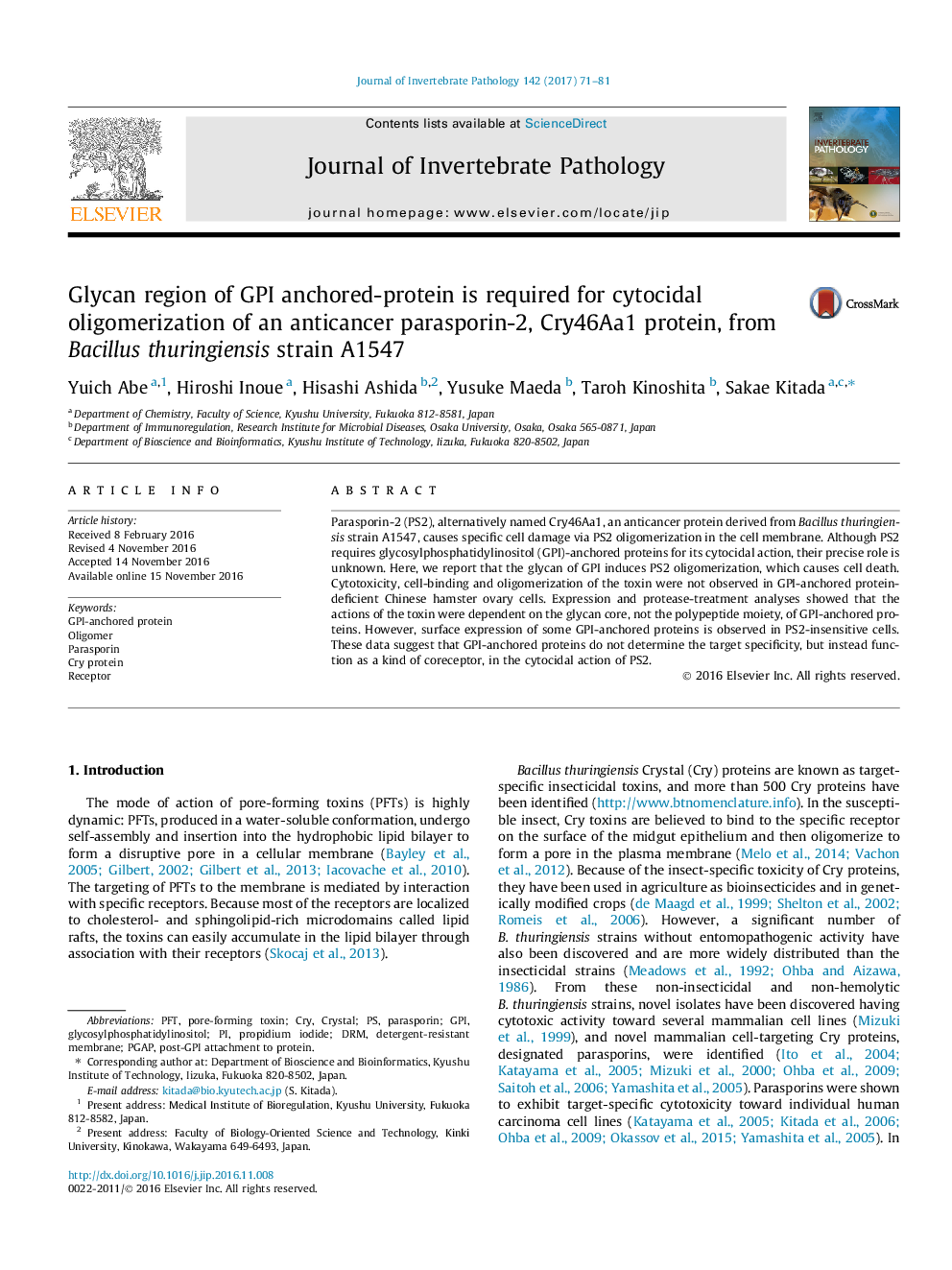| Article ID | Journal | Published Year | Pages | File Type |
|---|---|---|---|---|
| 5767054 | Journal of Invertebrate Pathology | 2017 | 11 Pages |
â¢GPI-anchored protein-deficient CHO cells are resistant to PS2.â¢PS2 directly binds to the glycan core of GPI-anchored protein.â¢PS2 localizes to lipid rafts in a GPI-anchored protein-independent manner.â¢GPI-anchored protein is not involved in the cytocidal selectivity of PS2.
Parasporin-2 (PS2), alternatively named Cry46Aa1, an anticancer protein derived from Bacillus thuringiensis strain A1547, causes specific cell damage via PS2 oligomerization in the cell membrane. Although PS2 requires glycosylphosphatidylinositol (GPI)-anchored proteins for its cytocidal action, their precise role is unknown. Here, we report that the glycan of GPI induces PS2 oligomerization, which causes cell death. Cytotoxicity, cell-binding and oligomerization of the toxin were not observed in GPI-anchored protein-deficient Chinese hamster ovary cells. Expression and protease-treatment analyses showed that the actions of the toxin were dependent on the glycan core, not the polypeptide moiety, of GPI-anchored proteins. However, surface expression of some GPI-anchored proteins is observed in PS2-insensitive cells. These data suggest that GPI-anchored proteins do not determine the target specificity, but instead function as a kind of coreceptor, in the cytocidal action of PS2.
Graphical abstractDownload high-res image (115KB)Download full-size image
